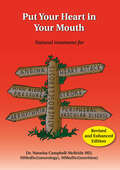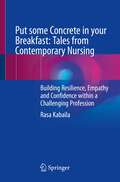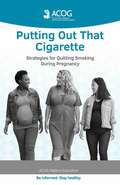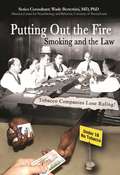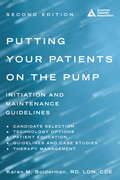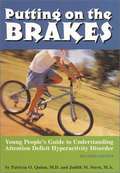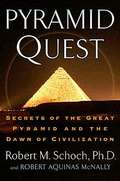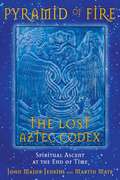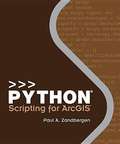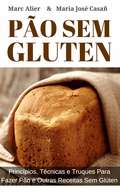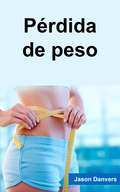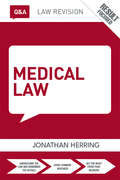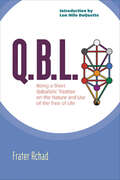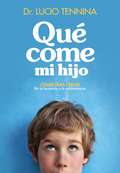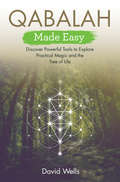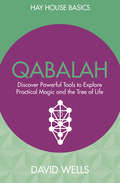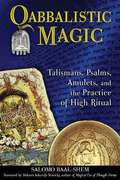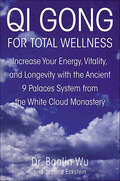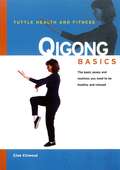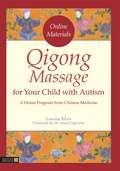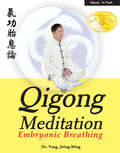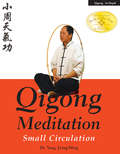- Table View
- List View
Put Your Heart in Your Mouth: Natural Treatment for Atherosclerosis, Angina, Heart Attack, High Blood Pressure, Stroke, Arrhythmia, Peripheral Vascular Disease
by Natasha Campbell-Mcbride MD"Put Your Heart in Your Mouth provides not only a well-written, easy-to-understand expose, but also a practical plan for preventing heart disease and regaining health, one that involves a return to traditional foods and an avoidance of environmental pollutants and common household chemicals. And her recipe section is fantastic! Put Your Heart in Your Mouth is must reading for anyone interested in diet and health."—Sally Fallon, President of The Weston A. Price Foundation, Author of Nourishing TraditionsIf you stop any person on the street and ask them what causes heart disease, you know what their answer will be: butter and eggs, meat and fat. This infamous Diet-Heart Hypothesis was proposed in 1953, and it took scientists all over the world a few decades to prove it wrong. The trouble is that while science was beginning to cast doubt upon its basic tenets, the Diet-Heart Hypothesis was giving rise to a powerful and wealthy political and commercial machine with a vested interest in promoting it—by means of anti-fat and anti-cholesterol propaganda presented relentlessly and with increasing intensity.In Put Your Heart in Your Mouth, Dr. Campbell-McBride tackles the subject of CHD (Coronary Heart Disease), caused by atherosclerosis, a disease of the arterial wall that leads to narrowing and obstruction of the arteries. She maintains that conventional medicine does not actually know the cause of atherosclerosis or how to cure it, and explores in this book what it is, what causes it, and how to prevent and reverse it. She dispels the myth of the Diet-Heart Hypothesis, and explains that cholesterol is not the enemy but an integral and important part of our cell membranes.
Put some Concrete in your Breakfast: Building Resilience, Empathy and Confidence within a Challenging Profession
by Rasa KabailaThis book gives a sincere yet honest representation of modern nursing in all its forms rather than purely focusing only on the ‘good’ ‘the funny’ ‘the sad’ or the ‘ugly’. This book provides a collection of stories that concentrate on nursing, that validates, educates and encourages those undertaking a career in nursing. In addition, this book also celebrates the amazing rewards that the unique career of nursing has to offer, for those who can find a way to persevere through the challenges. There is a high rate of burnout among nurses in their early days of practice, because of the high demands placed on them by the healthcare system; hospital administrations; the expectations of management, patients, families and carers; and the sheer size of the patient loads with complex needs these days. The global pandemic erupting has now pushed a health care service that was already under pressure to now be in complete crisis. The world now knows that we need more nurses employed to be able to move forward from this calamity. This book closes that gap in that it encourages the readers to continue to pursue a career in nursing (despite the challenges that the profession holds) while also positively promoting the incredible work that nurses do. The chapters within this book, explore a cornucopia of different aspects of nursing including: caring for dying patients, dealing with bodily fluids and how patients are not very good at working out how sick they really are. The book also covers how to manage the care of patients with complex mental illnesses and those contemplating suicide. This book is targeted at nurses who may feel a little overwhelmed with the world that is nursing but who wish to thrive and further their career. Discussion questions at the end of the book further add to the reflection and learning process of the reader.
Putting Out That Cigarette: Strategies for Quitting Smoking During Pregnancy (ACOG Patient Education)
by AcogThis eBooklet discusses the benefits of quitting smoking for pregnant women. The booklet covers the benefits of smoking, tips and guidelines for preparing to quit, setting a quit date, how to handle slips, after the baby is born, and how to get more help to quit smoking.
Putting Out the Fire: Smoking and the Law
by Joyce LibalFor years researchers have looked for ways to understand why some people seem to become addicted to cigarette smoking with the first puff while others don't. Studies have focused on why certain individuals have an easier time breaking the bonds of smoking and how smoking cessation success rates could be improved.
Putting Your Patients on the Pump
by Gary Scheiner Karen M. Bolderman Nicholas B. Argento Susan L. BarlowIn a clear and concise style, the extensively revised Putting Your Patients on the Pump offers physicians, nurse practitioners, physician assistants, clinicians, and educators experience and practical guidance on how to help patients successfully manage their diabetes using an insulin pump. Ten chapters provide an in-depth description of insulin pump therapy advantages and disadvantages, pump and infusion set options and selection, pump candidate basics, getting the patient ready, pump start-up, pump therapy management, other considerations (e.g., dining out, alcohol, exercise and physical activity, intimacy, managing sick days, stress, travel, weight change, menses and menopause, pregnancy, pediatrics, and older patients), resources, tips from pump experts, and insulin pumps of the future.Filled with checklists and step-by-step instructions, Putting Your Patients on the Pump is the ideal resource for health care professionals with expertise in diabetes care who wish to successfully start and maintain diabetes patients on insulin pump therapy.
Putting on the Brakes (Revised Edition): Young People's Guide to Understanding Attention Deficit Hyperactivity Disorder
by Patricia O. Quinn Judith M. SternExplains what attention deficit disorder is and how to treat it, discussing the cognitive and emotional aspects, what the medication options are, how to maintain positive relations with friends, and how to do well at school.
Puzzling Identities
by Vincent DescombesAs a logical concept, identity refers to one and the same thing. So how can it describe membership in various groups, as in ethnic and religious identity? Bringing together an analytic conception of identity with a psychosocial understanding, Vincent Descombes demonstrates why a person has more than one answer to the essential question Who am I?
Pyramid Quest
by Robert M. SchochThe Egyptologist acclaimed for re-dating the Great Sphinx at Giza sets his sights on one of the true mysteries of antiquity: the Great Pyramid of Giza. What is the Great Pyramid of Giza? Ask that basic question of a traditional Egyptologist, and you get the basic, traditional answer: a fancy tombstone for a self-important pharaoh of the Old Kingdom. This, Egyptologists argue, is the sole finding based on the data, and the only deduction supported by science. By implication, anyone who dissents from this point of view is unscientific and woolly-minded-a believer in magic and ghosts. Indeed, some of the unconventional ideas about the Great Pyramid do have a spectacularly fabulous ring to them. Yet from beneath the obvious terms of this controversy, a deeper, more significant question arises: how is it that the Great Pyramid exercises such a gripping hold on the human psyche- adding cryptic grace to the back of the one-dollar bill and framing myriad claims of New Age "pyramid power"? In Pyramid Quest, Robert M. Schoch and Robert Aquinas McNally use the rigorous intellectual analysis of scientific inquiry to investigate what we know about the Great Pyramid, and develop a stunning hypothesis: This ancient monument is the strongest proof yet that civilization began thousands of years earlier than is generally thought, extending far back into a little-known time. In tracing that story, we come to understand not only the Great Pyramid but also our own origins as civilized beings. .
Pyramid of Fire: Spiritual Ascent at the End of Time
by John Major Jenkins Martin MatzThe first translation of a previously unknown Aztec codex and its initiatory teachings for 2012• Discloses the potential for great spiritual awakening offered at the end of the Aztec calendar cycle• Presents the only existing English-language transcription of the Aztec codex, with line-by-line commentary• Contains the epic poetry and metaphysical insights of Beat poet Marty Matz (1934–2001In 1961 an unknown Aztec codex was revealed to Beat poet and explorer Marty Matz by a Mazatec shaman in the mountains of Oaxaca, Mexico. Originally intended for dramatic performance, this codex presents a profound metaphysical teaching describing how the end of time will bring about a visionary ascent. At the behest of his Mazatec teacher, Matz transcribed this pictorial codex into a literary form that would preserve its initiatory teachings and reveal its secret meanings to a wider audience.Pyramid of Fire is an epic poem that provides a vehicle to transport the initiate into the higher realms of consciousness. It represents a barely surviving thread of teachings that have been passed down in secret since the time of the Spanish Conquest. Revealed are the techniques by which man is transported to the stellar realm after death via the solar energy within what the ancients called the “serpent of consciousness.” Line-by-line commentary by Matz and John Major Jenkins provides insights into the perennial philosophy contained in the codex and its relevance to our times.
Python Scripting For ArcGIS
by Paul A. ZandbergenThis book is a guide for experienced users of ArcGIS® Desktop to get started with Python scripting without needing previous programming experience. Experience with other scripting or programming languages (Perl, VBA, VB script, Java, C++) is helpful but not required. Readers are expected to have good general ArcGIS skills and a basic understanding of geoprocessing procedures.
Pão Sem Glúten: Princípios, técnicas e truques para fazer pão e outras receitas sem glúten.
by María José Casañ Marc Alier Ana Paula Ruth LimaComo fazer pão e confeitara sem glútenm de maneira saudável e sem misturas comerciais. Um dia descobre que tem que eliminar o glúten da sua dieta e/ou da de agluém em sua vida. E, então, se pergunta: o que é o glúten? Onde está e como oevito? Como posso fazer pão, pãezinhos, cocas, crepes, magdalenas, tortas e bolos sem glúten em casa? Quais ingredientes posso utilizar? E, como? O pão sem glúten é igualmente nutritivo que o pão normal? Tenho que usar misturas comerciais ou posso criar a minha própria mistura? Estas mesmas perguntas se fizeram a autora e o autor de “Pão Sem Glúten” e o livro é sua resposta. O livro é dividido em duas partes. Na primeira parte aborda-se o problema do glúten na dieta, onde está, como evita-lo e, sobretudo, quais são os produtos alternativos ao glúten e suas propriedades. Identificam-se e analisam nutricionalmente os ingredientes (tipos de farinhas, aditivos, leveduras e gasificantes) para fazer fazer pão e confeitaria sem glúten. Como os resultados são afetados, como combinar e em proporção usar os ingredientes. A segunda parte se concentra na cozinha: apresentam-se as técnicas e truques para cozinhar sem glúten, e propõem 15 receitas de pães, pizzas, crepes, empanadas, cocas, bolos, magdalenas (cupcakes) e tortas sem glúten. Oferecendo alternativas nas receitas, processos, ferramentas (panificadoras, amassadora, amassar à mão) e tipos de farinhas para que você possa fazer suas próprias variações sem glúten.
Pérdida de peso: El plan completo hacia a motivación a perder peso
by Charlie FletcherEl plan completo para motivarse a perder peso La uía paso a paso para ayuno intermitente de la dieta cetogénica conseguirá montones y montones de valor en cómo funciona exactamente el ayuno intermitente con la ceto dieta para empoderar el estado metabólico de tu cuerpo para quemar aquellos mufins molestos y te guste manejarlos. La cocina cetogénica cotidiana posibilitará a los lectores liberarse de restricciones de las dietas modernas y ponerlos en un camino de salud de por vida con un ceto adaptado estilo de vida. Ketchum enseña cómo crear ceto amistosas recetas que saben muy bien, sino mejor, que sus contrapartes no saludables. Este libro te enseña todo lo que necesitas saber para maximizar tu tiempo en la cocina para que sólo tengas que cocinar pocas veces por semana, y tendrás deliciosas y saludables comidas para toda la familia en cuanquier momento hasta terminar la semana. Si estás list para entrar en acción y cambiar tu vida para mejor, este libro te guiará definitivamente en la dirección correcta!
Q&A Medical Law (Questions and Answers)
by Jonathan HerringRoutledge Q&As give you the tools to practice and refine your exam technique, showing you how to apply your knowledge to maximum effect in assessment. Each book contains essay and problem-based questions on the most commonly examined topics, complete with expert guidance and model answers that help you to: Plan your revision and know what examiners are looking for: Introducing how best to approach revision in each subject Identifying and explaining the main elements of each question, and providing marker annotation to show how examiners will read your answer Understand and remember the law: Using memorable diagram overviews for each answer to demonstrate how the law fits together and how best to structure your answer Gain marks and understand areas of debate: Providing revision tips and advice to help you aim higher in essays and exams Highlighting areas that are contentious and on which you will need to form an opinion Avoid common errors: Identifying common pitfalls students encounter in class and in assessment The series is supported by an online resource that allows you to test your progress during the run-up to exams. Features include: multiple choice questions, bonus Q&As and podcasts.
Q.B.L.: Being a Short Qabalistic Treatise on the Nature and Use of the Tree of Life
by Frater AchadQ.B.L. is a unique work in both Qabalah and Thelemic circles. In the world of the Qabalah, Frater Achad revealed revolutionary new principles that caused students of the Qabalah to reexamine and thus deepen their knowledge of the Tree of Life. In Thelemic circles, Aleister Crowley named Frater Achad his magical heir and Achad was fully expected to lead the cause of Thelemic Magick after Crowley's death--until publication of this book caused a rift between the two and Crowley began to distance himself from Achad. This is a rare and valuable book, both for its insight and circumstances. True understanding of the Qabalah and its benefit in magical practice is clearly described, and the information contained is both practical and revelatory. The circumstances surrounding it--Frater Achad's falling out with Crowley and eventual descent into apparent insanity--prove a valuable lesson and warning for individual seekers and those associated with established mystery schools.
QUE COME MI HIJO (EBOOK)
by Lucio TenninaHoy circula mucha información equivocada acerca de los alimentos. Lucio Tennina, experto médico nutricionista de gran trayectoria y éxito probado, escucha hace años a padres desorientados acerca de la comida con la que alimentan a sus hijos e insiste en que la clave sigue siendo saber para comer. Este libro tiene ese punto de partida. Luego de la lactancia, cuando se amplía la dieta del niño, qué hacemos? Por qué el bebé come verduras hasta el año y medio y luego las detesta? Qué le transmitimos? Qué come mi hijo explica de manera clara qué deben comer los chicos en cada etapa de crecimiento y cómo deben incorporar los alimentos para adecuarlos a los cambios que se van sucediendo en sus cuerpos y a las necesidades que estos conllevan. Incluye menús semanales con un completo equilibrio de nutrientes y viandas escolares aconsejables para cada día de la semana. Al cuidar la salud de nuestros hijos, vamos también a cuidar la propia. Qué come mi hijo es una oportunidad para mejorar la calidad de vida de toda la familia y ayudar a nuestros niños en el desarrollo de una vida sana.
Qabalah Made Easy: Discover Powerful Tools to Explore Practical Magic and the Tree of Life
by David WellsDiscover how to use the spiritual teachings of the Tree of Life to learn more about yourself, improve your experience on Earth, and fulfill your life purpose.The Qabalah is a Western non-religious mystic tradition (differing from the Kabbalah, which is an aspect of Jewish mysticism) offering teachings on the nature of divinity, the creation, the origin and fate of the soul, and the role of human beings. It consists of meditative, devotional, and mystical practices, including astrology, tarot, and magic. The central organizational system of the Qabalah is the Tree of Life - a mystical symbol consisting of ten interconnected spheres and considered to be a map of the universe and the psyche, the order of the creation of the cosmos, and a path to spiritual illumination.This introductory book breaks down the ideas of the Tree of Life into an easy to follow path, and shows how to use it effectively in our lives. Readers will learn:- the meaning of each of the spheres- a ritual and a meditation for each sphere- the gods, archangels, crystals, and magical tools connected to each sphere and how to work with them- how to set up a personal temple and create their own magical symbol- how to chant the Qabalistic prayer to draw down the Archangels for protection This book was previously published in the Hay House Basics series.
Qabalah for Wiccans: Ceremonial Magic on the Pagan Path
by Jack ChanekExplore the Tree of Life from a Pagan Point of ViewYou don't have to shy away from Qabalah anymore—this book makes it easy to use ceremonial magic and incorporate its symbolism into your Wiccan rituals and workings. Join Jack Chanek on an exploration of Hermetic Qabalah and learn how its concepts can be interwoven with the essential elements of Wicca.Featuring an abundance of journal prompts, exercises, and correspondences, Qabalah for Wiccans is the ideal resource for understanding Qabalah as a Pagan practitioner. You'll uncover Qabalistic connections to Wiccan theology, ascend the Tree of Life through meditation and ritual, and explore the Tree's ten Sephiroth using the four elements, tarot, and more. Revealing many similarities between the two practices, this remarkable book shows you how Qabalah works and why it matters to your Wiccan path.Includes a foreword by Deborah Lipp, author of Magical Power for Beginners
Qabalah: Discover Powerful Tools to Explore Practical Magic and the Tree of Life (Hay House Basics Ser.)
by David WellsDiscover Qabalah, a Western non-religious mystic tradition containing a body of magical knowledge and practices to help you embrace your higher self. In this book, you will learn:• The role of the Tree of Life – the central organizational system of Qabalah• The meaning of each Sephira, or sphere, on the Tree• An exercise and meditation for each Sephira• How to work with and understand the symbolism of each Sephira, from Gods and Goddesses to Crystals• How to increase the energy for your meditations and create a personal sigil, or symbol, to represent your highest values• How to use Qabalistic prayer and work with the four great Archangels for daily support and protection ... and much more!
Qabbalistic Magic: Talismans, Psalms, Amulets, and the Practice of High Ritual
by Dolores Ashcroft-Nowicki Salomo Baal-ShemA comprehensive guide to practicing the magic of the Qabbalah • Spells for everyday problems related to health, love, prosperity, and protection • Rituals for advanced high-level magic, such as invocation of angelic powers or spiritual vision • Explains how to make and design talismans, amulets, and magic bowls, including harnessing the power of Hebrew letters in their designs • Details the magical uses of 150 psalms The Qabbalah--the Jewish esoteric tradition--is richly woven with magical practices, from amulets and magic bowls to invocations and magical use of psalms. In this comprehensive and practical guide to Qabbalistic magic, Salomo Baal-Shem explains how to authentically perform rituals from the Qabbalistic tradition. The spells and rituals included range from basic “everyday” magic for health, prosperity, love, protection, and prophetic dreams to advanced high-level magic such as invoking the highest angelic powers or creating an astral life-form, or Golem. Revealing the occult teachings of the 4th-century Book of the Mysteries, the magical uses of 150 psalms, and how to harness the power of Hebrew letters in talisman designs, the author also shows you how to contact the Maggid, or Divine inner teacher, or attain the spiritual vision of the Merkabah. A thoroughly accessible guide to the magic of the Qabbalah, this book also covers the underlying spiritual principles and history of these powerful magical practices.
Qi Gong for Total Wellness: Increase Your Energy, Vitality, and Longevity with the Ancient 9 Palaces System from the White Cloud Monastery
by Baolin Wu Jessica EcksteinQi Gong for Total Wellness is a clear, illustrated guide to Qi Gong, the ancient self-healing art that combines movement, meditation, and visualization to boost energy and improve health. Author Baolin Wu specializes in Nine Palaces Solar Qi Gong which works with the energy of the son, and trains practioners to expel toxins and intake healthy qi through the nine openings--palaces-- of the body.This introduction to the concepts of Qi Gong and contains exercises and methods pertaining to each part of the body, with clear instructions how to accurately apply the methods of Solar Qi Gong to increase physical and mental health using this ancient art.
Qigong Basics
by Ellae ElinwoodAlong with an overview of Qigong, the book contains everything to get started - choosing the form, teacher, and the class best suited to their needs. The book shows the elements of style, - breathing, stances, grounding, expansions, and meditation giving readers hands-on fitness training. Like all the other books in the Basics series Qigong Basics offers a complete introduction and a manual readers can turn to for years to come.
Qigong Basics
by Ellae ElinwoodAlong with an overview of Qigong, the book contains everything to get started - choosing the form, teacher, and the class best suited to their needs. The book shows the elements of style, - breathing, stances, grounding, expansions, and meditation giving readers hands-on fitness training. Like all the other books in the Basics series Qigong Basics offers a complete introduction and a manual readers can turn to for years to come.
Qigong Massage for Your Child with Autism: A Home Program from Chinese Medicine
by Anita Cignolini Louisa SilvaQigong massage has been used in China for thousands of years as a means to achieve health and wellbeing, and to treat a wide variety of ailments. This book teaches parents a simple qigong massage programme that has been developed specifically for the needs of children with autism spectrum disorders (ASDs). With step-by-step instructions and an accompanying online content demonstrating the technique in action, this book offers parents clear guidance on how to adopt qigong massage into their child's daily routine successfully. The program is based around a core 15 minute massage that, when performed regularly, has been shown to greatly improve mood and behavior, sleeping patterns, and language and social skills. Also included is information on diet, advice on reading a child's body language during massage, and helpful progress checklists. Qigong massage is the ideal therapy for parents looking for an alternative way to strengthen the mind, body and sensory abilities of their young child with autism aged 6 and under.
Qigong Meditation: Embryonic Breathing (Meditation #1)
by Jwing-Ming YangFinalist - 2006 Book of the Year Award by ForeWord Magazine The Root of Spiritual Enlightenment Chinese Qigong can be generally categorized into External Elixir (Wai Dan) and Internal Elixir (Nei Dan) Qigong. The first step of practicing Internal Elixir Qigong has been known as Small Cyclic Heaven (Small Circulation or Microcosmic Meditation). After completing Small Cyclic Heaven, a practitioner will learn Grand Cyclic Heaven (Grand Circulation or Macrocosmic Meditation). The purpose of Grand Cyclic Heaven is to re-open the Heaven Eye (Third Eye) to unite the natural spirit and human spirit. This is the ultimate goal of spiritual enlightenment in both Daoism (Taoism) and Buddhism. Although these kinds of meditations are popular, very few scientific books or documents are available to the public. The Foundation of Internal Elixir Cultivation In order to reach the goal of longevity and spiritual enlightenment, the Qigong practitioner must learn Internal Elixir Qigong. The first step to learning is to understand the theory and the method of Embryonic Breathing. Practicing this breathing technique will help you to establish your central energy system, conserve your energy, and store this energy to abundant levels. Once you have established this foundation, you will be able to practice Small Cyclic Heaven (Small Circulation or Microcosmic Orbit) and Grand Cyclic Heaven (Grand Circulation of Macrocosmic Orbit) effectively. It is understood that without this foundation, the root of spiritual enlightenment will not be established and the study and the practice of spiritual enlightenment, through meditation, will be in vain. * Embryonic Breathing theory and techniques were kept secret in Buddhist and Daoist (Taoist) monasteries. * Dr. Yang discusses most of the available documents, translates and comments upon them. * Scientific analysis and summary of the practice methods. * A comprehensive, straightforward way to understand and practice Embryonic Breathing.
Qigong Meditation: Small Circulation
by Jwing-Ming YangFinalist - 2006 Book of the Year Award by ForeWord Magazine Small Circulation, or the Microcosmic Orbit, is the practice of circulating energy, within the human body, Qi, through the two main pathways, or "vessels" of the body. This practice is considered to be the foundation of Internal Elixir Qigong, and was a fundamental step on the path of meditation training in ancient times. Over the centuries, this practice has slowly been lost from many meditation traditions, and its importance has been forgotten. Small Circulation regulates the Qi circulating in the Twelve Primary Qi channels, making it abundant throughout the entire body, which has been known for centuries for promoting health and longevity. This is also the foundation of Muscle/Tendon Changing Qigong (Yi Jin), which deeply conditions and strengthens the body. It is advised that you begin your meditation training by practicing Embryonic Breathing, which will help you to establish your central energy system, and to conserve and store this energy to abundant levels. Building on this foundation, Small Circulation is the next required stage of meditation training. Ultimately, one then practices Grand Circulation Meditation, which circulates Qi everywhere in the body and exchanges it with partners and the surrounding environment. Its purpose is to open the third eye and reunite the human spirit with the spirit of nature. This book contains translation and analysis of many ancient documents used to transmit Small Circulation and Internal Elixir cultivation to future generations, and offers modern scientific explanation for learning and training safely. Though meditation is popular today for relaxation and general health, the ultimate goal of this training, in both Daoism (Taoism) and Buddhism, is spiritual enlightenment. *Small Circulation Meditation builds the body from weak to strong and trains the mind to be calm and focused. *Dr. Yang presents a modern method for learning safely. *Includes scientific analysis, translation and commentary of ancient documents, and a summary of the practice methods.
